FHIR, or Fast Healthcare Interoperability Resources, is crucial for healthcare data exchange as it enables different healthcare systems to communicate and share patient information efficiently and accurately. This standard is important because it improves care coordination, patient engagement, and overall healthcare delivery by ensuring that data is interoperable and readily accessible across platforms.

October 3, 2024
FHIR Standard: Streamlining Healthcare Through Seamless Integration
Written by Marc Alringer
Key Takeaways
-
FHIR (Fast Healthcare Interoperability Resources) provides a unified framework, enabling interoperability and enhancing health systems by streamlining data exchange, reducing administrative burdens, and improving clinical decision-making.
-
FHIR transforms healthcare by allowing various systems to pull data from other systems. Those systems can then enhance clinical decision-making and patient monitoring and improve revenue management by leveraging the additional data available.
-
At Seamgen, we build all our healthcare apps with FHIR built in to ensure seamless integration, secure data exchange, and interoperability across diverse healthcare systems, providing our clients with reliable and efficient solutions for their health IT needs.
Time to read: 15 min
Table of Contents +
- FHIR: The Continuum of Health Data Exchange
- Benefits of FHIR
- The Origin of FHIR
- How Does FHIR Compare to Other Interoperability Standards?
- FHIR Worldwide Popularity
- The Technical Side of FHIR: APIs and Implementation
- Importance of FHIR and Related Technologies
- Key Concepts of FHIR
- FHIR Modules
- Understanding FHIR APIs
- FHIR Development Requirements
- Case Studies: FHIR's Impact on EHR Systems
- Case Study #1: Enhancing Population Health Management with FHIR at HealthTech Hospital
- Case Study #2: Kaiser's Advancements in Patient Portals
- Case Study #3: Facilitating Clinical Decision Support
- Summary
- Frequently Asked Questions
Understanding FHIR is essential in today’s digital health landscape. This article explains Fast Healthcare Interoperability Resources (FHIR), discusses its strategic role in connecting healthcare systems, and outlines its principles for facilitating better patient outcomes. Discover how FHIR bridges gaps in healthcare IT, and anticipate actionable insights as we cover its applications and benefits.
FHIR: The Continuum of Health Data Exchange
Healthcare has long struggled with data interoperability. Fast Healthcare Interoperability Resources (FHIR) is a standard that facilitates the seamless exchange of healthcare data, improving connectivity and efficiency. FHIR guides healthcare systems worldwide towards integrated, patient-centered care by breaking down isolated health information silos, promising a transformation similar to internet-based experiences in other industries.
Benefits of FHIR
By leveraging FHIR in mobile apps, healthcare providers and developers can create more integrated, secure, and patient-centered solutions, ultimately improving healthcare delivery and patient outcomes. Some of these benefits include:
Interoperability
Seamless data exchange across different systems.
Flexibility
Modular, extensible structure tailored to specific needs.
Patient Engagement
Real-time access and personalized care.
Security
Built-in standards for data protection.
Rapid Development
Simplified API for faster deployment.
Scalability
Global adoption and cloud integration.
Real-Time Access
Timely data for critical decision-making.
Innovation Support
Enables advanced healthcare solutions.
Patient-Centered Care
Aggregation of cross-provider data.
Regulatory Alignment
Supports compliance and quality reporting.
The Origin of FHIR
FHIR’s story started in 2012 and was initiated by Graham Grieve and his team at HL7. Driven by a personal mission to enhance healthcare information sharing, they embarked on a quest to create a standard that would seamlessly bridge the gaps between disparate health systems.

Graham Grieve, the creator of the FHIR standard, revolutionized healthcare data exchange by developing a modern, flexible framework that enables seamless interoperability across healthcare systems worldwide
FHIR emerged as a leap forward from HL7’s previous standards, embracing modern web technologies such as JSON and XML to pave the way for easier application and superior interoperability.
The journey from inception to adoption was marked by a series of pivotal events, including:
-
Release: Its release as a Draft Standard for Trial Use in 2014
-
EHR vendors traction: The standard quickly gaining traction and earning support from major EHR vendors, health systems, and influential tech giants
-
Corporate endorsements: The collective effort of initiatives like the Argonaut Project and endorsements from the likes of Apple, Microsoft, and Google solidified FHIR’s place in the custom healthcare software development landscape.
How Does FHIR Compare to Other Interoperability Standards?
FHIR stands out among interoperability standards due to its modern web-based approach and flexibility. Here's how it compares to other major standards:

HL7 V2
HL7 Version 2 (HL7 V2) is one of the oldest and most widely used healthcare interoperability standards. It enables the exchange of clinical data between hospital systems. However, it relies on a pipe-delimited message format, which can be complex and difficult to implement. FHIR, in contrast, uses modern web technologies like RESTful APIs, JSON, and XML, making it easier to integrate and use.
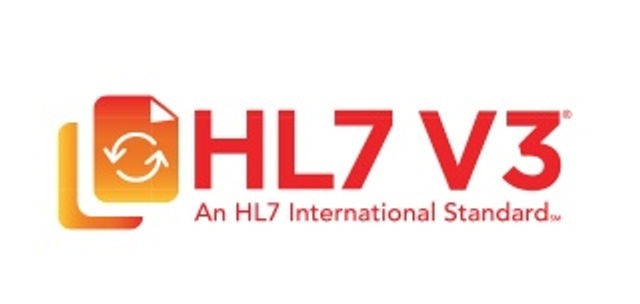
HL7 V3
HL7 Version 3 (HL7 V3) aimed to address some of the limitations of HL7 V2 by introducing a more consistent and formal methodology. However, it became known for its complexity and limited adoption. FHIR simplifies data exchange by focusing on ease of implementation and leveraging widely adopted web standards, which has led to broader acceptance and faster adoption.
.png)
HL7 CDA
CDA is an HL7 standard for the exchange of clinical documents. It focuses on the structure and semantics of clinical documents to ensure that they are both human-readable and machine-processable. While CDA is robust for document-based exchanges, FHIR extends beyond documents to include granular, discrete data elements (resources) that can be easily accessed and manipulated via APIs.

DICOM (Digital Imaging and Communications in Medicine)
DICOM is the standard for the management and transmission of medical imaging information. It is highly specialized for handling images and related data. FHIR complements DICOM by providing a framework for integrating imaging data with other clinical data, enabling a more holistic view of patient information. FHIR can reference DICOM resources, facilitating interoperability between imaging systems and other healthcare applications.
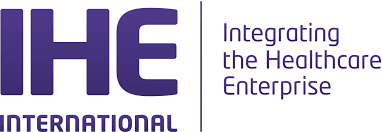
IHE (Integrating the Healthcare Enterprise)
IHE is not a standard itself but a framework that leverages existing standards (including HL7, DICOM, and CDA) to address specific healthcare interoperability challenges. It defines integration profiles that outline how to use these standards in various clinical scenarios. FHIR can be used within IHE profiles to enhance interoperability by providing a simpler and more flexible means of data exchange.
While traditional standards like HL7 V2, HL7 V3, CDA, and DICOM have laid the groundwork for healthcare interoperability, FHIR offers a more modern, flexible, and developer-friendly approach. Its use of web technologies and focus on ease of implementation have made it a popular choice for new, healthcare software applications, fostering a more interconnected and efficient healthcare ecosystem.
FHIR Worldwide Popularity
Many healthcare systems and organizations worldwide have adopted FHIR to improve interoperability and streamline data exchange. Here are some examples:
Epic Systems
Epic, a leading electronic health record (EHR) vendor, has integrated FHIR to enable better data sharing between systems and improve patient care coordination.
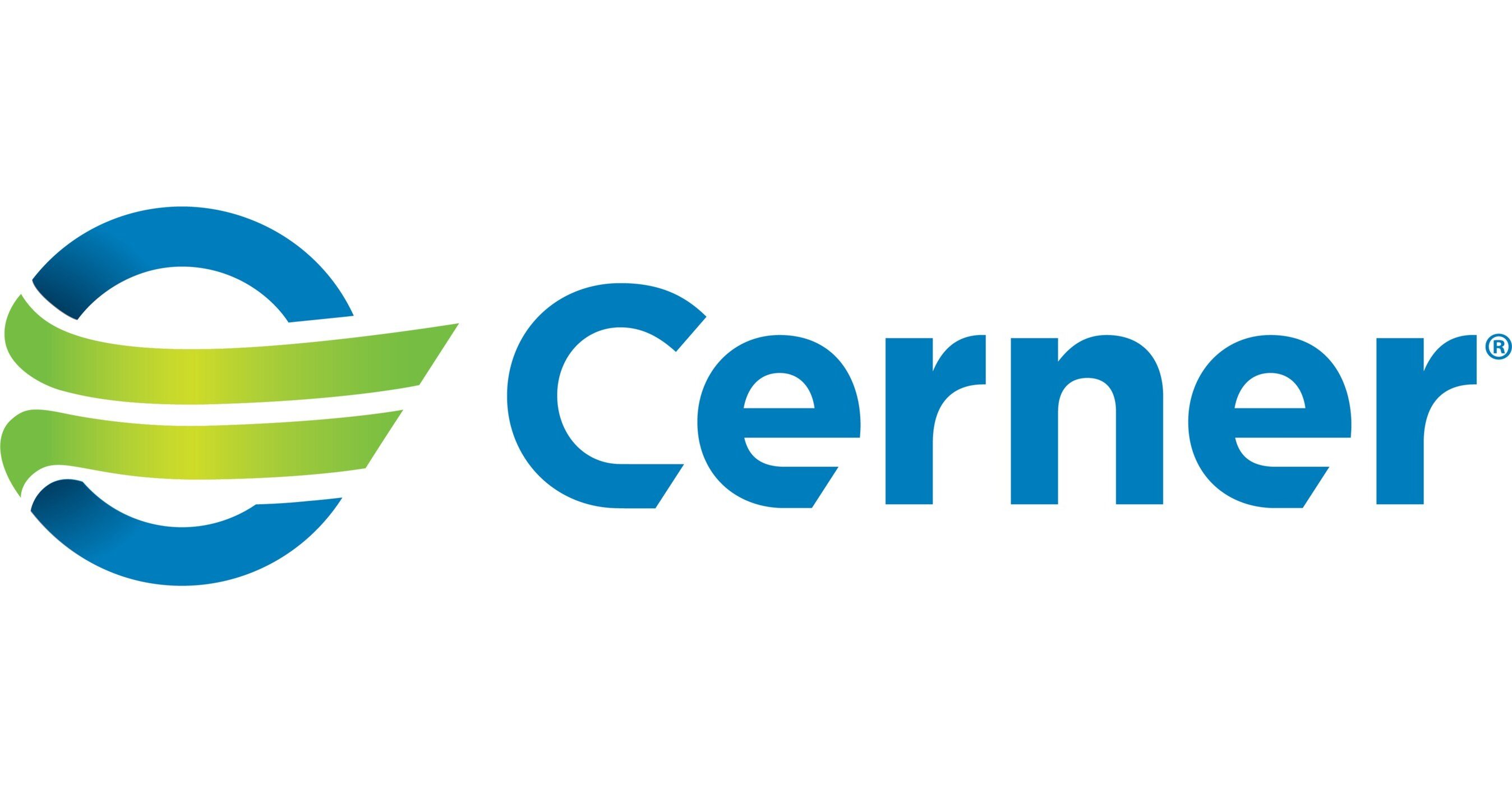
Cerner
Cerner, another major EHR provider, uses FHIR to enhance compatibility, allowing data to be shared effortlessly across different healthcare settings.
Apple Health Records
Apple Health Records: Apple has adopted FHIR to allow patients to download their health records directly to their iPhones, making it easier for individuals to manage and share their health data.
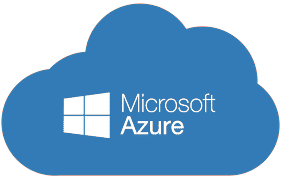
Microsoft Azure API for FHIR
Microsoft provides a managed FHIR service that helps healthcare organizations connect disparate data sources and systems, ensuring secure and compliant data exchange.
These examples illustrate the in roads FHIR has made into the healthcare industry and enhanced healthcare interoperability, improved patient outcomes, and fostered innovation in health IT.

Better computer systems allow providers to focus more energy on caring for patients.
FHIR aims to streamline healthcare information exchange by establishing common-use resources and equipping applications to access data across various EHR systems. This creates a unified framework exchanging data, that fosters an interconnected, interoperable healthcare ecosystem.
The Technical Side of FHIR: APIs and Implementation
Importance of FHIR and Related Technologies
FHIR (Fast Healthcare Interoperability Resources) is an HL7 standard designed to streamline healthcare data exchange. Its modular, resource-based structure allows for seamless integration and interoperability between diverse healthcare systems.
Each exchangeable healthcare data element is represented as a "resource." These resources have shared characteristics such as metadata and a human-readable section. FHIR’s architecture leverages RESTful APIs, promoting real-time data interactions and ease of use for developers.
Key Concepts of FHIR
The technical architecture of HL7's FHIR (Fast Healthcare Interoperability Resources) standard is built around a modular, resource-based approach. FHIR is designed to be simple to implement, focusing on interoperability by combining resources to meet specific use cases. The architecture also includes components for more robust security measures, privacy, conformance, and support for various healthcare domains, including clinical and administrative data.
Core Concepts
-
Resources: Building blocks of FHIR, representing diverse aspects such as patient demographics, clinical observations, and treatment records.
-
RESTful API: Utilizes standard HTTP methods (GET, POST, PUT, DELETE) to interact with FHIR resources, facilitating efficient and straightforward data operations.
-
Data Formats: Supports both JSON and XML for data exchange, enhancing compatibility with various systems.
-
Terminology Service: Integrates standardized coding systems like SNOMED CT and ICD-10, ensuring consistent data representation across platforms.
Security
-
Security Standards: Employs OAuth 2.0 for secure authentication and HTTPS for encrypted data transmission, safeguarding sensitive information.
-
Versioning: Manages resource updates and ensures backward compatibility, maintaining data integrity over time.
-
Conformance: Enforces compliance through profiles, extensions, and implementation guides tailored to specific use cases.
Functionality
-
Operations: Offers advanced capabilities beyond CRUD operations, such as complex queries and actions.
-
Messaging and Documents: Supports both traditional messaging protocols and document-based data exchanges.
-
Extensions: Permits customization and additional features without altering the core specifications of FHIR.
Support
- Domains Covered: Includes clinical, administrative, and financial data, making FHIR versatile for multiple healthcare applications.
Seamgen Pro Tip: FHIR Resources Deep Dive
The basic building block in FHIR is a Resource. All exchangeable content is defined as a resource. Resources all share the following set of characteristics:
-
A common way to define and represent them, build them from datatypes that define common reusable patterns of elements.
-
A common set of metadata.
-
A human-readable part.
Two special kinds of resources are used to describe how resources are defined and used:
-
Capability Statement - describes the interfaces that an implementation exposes for the exchange of data.
-
StructureDefinition - provides additional rules that serve to constrain the optionality, cardinality, terminology bindings, datatypes, and extensions defined in the resources used by the implementation.
FHIR Modules
In FHIR, modules are conceptual groupings of related resources and functionalities that serve a particular aspect of healthcare. Each module focuses on a specific domain, providing an organized structure for implementing resources, operations, and interactions in that domain. Modules ensure that FHIR resources are logically grouped to address particular use cases, making it easier for developers and implementers to use FHIR efficiently.
Key FHIR Modules
Patient Administration
Patient-related data, including patient identification, encounters, and demographics.
Clinical
Contains resources related to clinical care, such as conditions, observations, medications, and procedures.
Diagnostics
Focuses on diagnostic processes, including resources like laboratory results, imaging studies, and diagnostic reports.
Medications
Handles everything related to medications, including prescriptions, administration, and medication statements.
Workflow
Supports the processes that drive healthcare operations, such as tasks, appointments, and care plans.
Financial
Manages billing, insurance claims, and other financial aspects of healthcare.
Infrastructure
Provides foundational support for communication, auditing, messaging, security, and other operational needs.
Terminology
Manages code systems, value sets, and concepts, supporting standardized vocabularies like SNOMED CT, ICD-10, and LOINC.
Clinical Decision Support
Provides resources to support clinical decision-making processes, including plans, actions, and guidance.
Public Health and Research
Addresses needs for public health reporting, clinical trials, and epidemiological studies.
Quality Reporting
Supports quality measures and performance metrics, such as the evaluation of care standards.
Security
Focuses on privacy, access control, and audit trails for sensitive healthcare data.
Identification & Authentication
Ensures accurate identification of individuals, devices, and organizations.
There are many more modules in FHIR, but these are some prominent ones. Each module is designed to handle a specific part of the healthcare ecosystem, contributing to FHIR's flexibility and comprehensiveness.
Click on HL7's FHIR Specification for more details
Understanding FHIR APIs
FHIR APIs are the conduits through which the stream of healthcare data flows, and they are characterized by their RESTful nature, a core capability that facilitates efficient health data exchange. Operating over the HTTPS protocol, these APIs serve as the guardians of data security, ensuring safe retrieval and analysis of FHIR resources, which in turn supports advanced data analytics.
The APIs’ compatibility with common data model formats such as JSON, XML, and RDF offers a level of flexibility that is unparalleled, promoting seamless data exchange and enabling healthcare applications to adapt to the evolving needs of the healthcare industry.

Marc Alringer
President/Founder, Seamgen
Marc Alringer, the visionary President and Founder of Seamgen, has been at the forefront of digital transformations, specializing in web and mobile app design and development. A proud alumnus of the University of Southern California (USC) with a background in Biomedical and Electrical Engineering, Marc has been instrumental in establishing Seamgen as San Diego's top custom application development company. With a rich history of partnering with Fortune 500 companies, startups, and fast-growth midsize firms, Marc's leadership has seen Seamgen receive accolades such as the Inc 5000 and San Diego Business Journal’s “Fastest Growing Private Companies”. His expertise spans a wide range of technologies, from cloud architecture with partners like Microsoft and Amazon AWS, to mobile app development across platforms like iOS and Android. Marc's dedication to excellence is evident in Seamgen's impressive clientele, which includes giants like Kia, Viasat, Coca Cola, and Oracle.
FHIR Development Requirements
Developing a fully functioning mobile app that uses FHIR involves building and integrating several components, including FHIR servers, client-side libraries, and potentially other apps or cloud managed services for authentication, data handling, and more. Below is an outline of the key elements and software requirements you'll need to develop and configure.
FHIR Server
-
What it does: The FHIR server acts as the backend repository for healthcare data, providing a RESTful API to interact with FHIR resources like patients, observations, medications, etc.
-
Options:
-
Hosted FHIR Servers: Cloud-based options like Google Cloud Healthcare API, Microsoft Azure FHIR, or AWS FHIRWorks allow you to leverage their infrastructure without building your own server.
-
Self-hosted FHIR Servers: You could set up your own FHIR server using software like HAPI FHIR or IBM FHIR Server.
-
-
What you need to do: Set up the server to manage, store, and expose FHIR data via REST APIs. You’ll also configure security (e.g., OAuth 2.0) and ensure compliance with the FHIR standards.
Mobile App (Client)
-
What it does: The mobile app interacts with the FHIR server to access or store healthcare data. It serves as the user-facing interface that consumes FHIR APIs and displays relevant data.
-
Components:
-
UI/UX: Design and develop the app’s user interface for patients, healthcare providers, or other users.
-
FHIR Client Libraries: Use FHIR libraries for mobile app development to manage the API interactions. For example:
-
SMART on FHIR libraries for native mobile app development.
-
HAPI FHIR Client or other language-specific libraries for easier interaction with the FHIR server.
-
-
Authentication Integration: Integrate OAuth 2.0 or other relevant authentication mechanisms (often via SMART on FHIR framework) to allow secure access to healthcare data.
-
Authorization and Authentication Server
-
What it does: You’ll need an OAuth 2.0-compliant authorization server to handle the authentication and authorization of users (patients, doctors, etc.). This ensures secure access to health data as per FHIR and SMART on FHIR specifications.
-
Options:
-
Hosted Identity Services: Use services like Auth0, Okta, or AWS Cognito for authentication.
-
Custom Authorization Server: You could set up a custom OAuth 2.0 server if you need greater control over the security and authorization processes.
-
-
What you need to do: Integrate this with the mobile app and the FHIR server to handle secure logins, patient consent, and access tokens for FHIR API calls.
Backend Services
-
What they do: While the FHIR server handles core healthcare data, you might need additional backend services for other app functionality, such as notifications, data aggregation, reporting, etc.
-
Examples:
-
Data Processing Service: Services that aggregate or process data before sending it to the mobile app, such as converting lab results into a more user-friendly format.
-
Notifications: Push notification services (like Firebase Cloud Messaging) to alert users about appointment reminders or new lab results.
-
-
What you need to do: Develop and integrate additional backend services, depending on your app’s specific functionality and needs.
SMART on FHIR App (Optional)
-
What it does: If your mobile app needs to integrate with other EHR systems or platforms, you may need to develop a SMART on FHIR app. This allows the app to embed within EHR systems and access data via FHIR APIs.
-
Why Optional: This is only needed if you're targeting EHR system integration, typically used in apps designed for clinical environments.
Data Storage and Syncing
-
What it does: You may need to store data locally on the mobile device for offline access and later sync it with the FHIR server when the device is online.
-
Options:
-
Local Databases: Use SQLite or Realm to store data on the mobile device.
-
Sync Mechanisms: Implement syncing logic that uploads data to the FHIR server once a network connection is available.
-
-
What you need to do: Develop the logic to store and synchronize data between the app and the FHIR server.
Testing and Validation Services
-
What they do: Ensure that your mobile app properly implements FHIR standards by using validation tools.
-
Examples:
-
HAPI FHIR Validator: For validating FHIR resource conformance.
-
Inferno: A tool to test compliance with SMART on FHIR and other implementation guides.
-
-
What you need to do: Test your app against a FHIR test server and validate that it correctly interacts with FHIR APIs according to industry standards.
Seamgen is a Custom Healthcare Software Development Company
As a custom healthcare software development organization, we value the FHIR standard for creating intuitive web and app solutions. By adhering to FHIR standards, our custom solutions and systems connect effortlessly with other FHIR-based systems. Our mission is to deliver interoperable and tailored solutions for healthcare providers.
Our development team leverages cutting-edge technologies and industry best practices to create healthcare software solutions that enhance patient care and streamline clinical workflows. By building on the FHIR standard, we showcase the transformative potential of custom healthcare software development. As a provider of custom healthcare software development services, we are dedicated to delivering top-quality products to our clients.
As a company specializing in healthcare software development, we recognize the immense value of FHIR in creating user-friendly web and app solutions for healthcare industry. Our commitment to seamless integration of healthcare software product development with various healthcare systems is evident in our adherence to FHIR standards. Seamgen offers comprehensive healthcare software development services, leveraging the latest technologies to enhance patient care and streamline clinical workflows.
Case Studies: FHIR's Impact on EHR Systems
Below are some case studies from Healthcare projects we have had with past clients and partners.
Case Study #1
Enhancing Population Health Management with FHIR at HealthTech Hospital
HealthTech Hospital integrated the FHIR standard into its Epic EHR system to enhance population health management. This integration addressed challenges such as fragmented data sources and inefficiencies in monitoring chronic conditions.

Data Aggregation and Analysis
FHIR facilitated the seamless aggregation of health data from diverse sources, including clinical records, wearable devices, and administrative systems. This comprehensive data allowed for sophisticated analyses, uncovering trends, healthcare data breaches and insights that were previously hidden.
Comprehensive Health Dashboards
Using FHIR, HealthTech Hospital developed advanced health dashboards that provided real-time monitoring of key health metrics, improved management of chronic conditions, and effective risk stratification for targeted interventions.
Proactive Care Management
Insights from FHIR-enabled dashboards empowered HealthTech Hospital to implement preventive measures, reduce readmissions, and enhance patient engagement through proactive health management strategies.
Results
The FHIR integration led to significant improvements, including better health outcomes, increased operational efficiency, and cost savings through preventive care. This case study highlights FHIR's transformative impact on population health management at HealthTech Hospital, demonstrating its potential benefits for other healthcare institutions.
Case Study #2
Kaiser's Advancements in Patient Portals
FHIR’s influence is particularly noticeable in the area of patient portals. These digital gateways have been transformed into comprehensive hubs of health data, offering patients an unprecedented level of access to their medical history and records. The shift towards greater patient engagement is palpable, as FHIR-driven portals and applications provide:
-
personalized and informative health data
-
tools for tracking and managing health conditions
-
reminders for medication and appointment schedules
-
secure messaging with healthcare providers
This encourages patients to take an active role in their health management.
Kaiser Permanente utilizes patient portals to provide its members with secure, convenient access to their health information, appointment scheduling, and communication with healthcare providers. These patient portals leverage the FHIR standard to ensure that the data shared across various systems is consistent and interoperable.
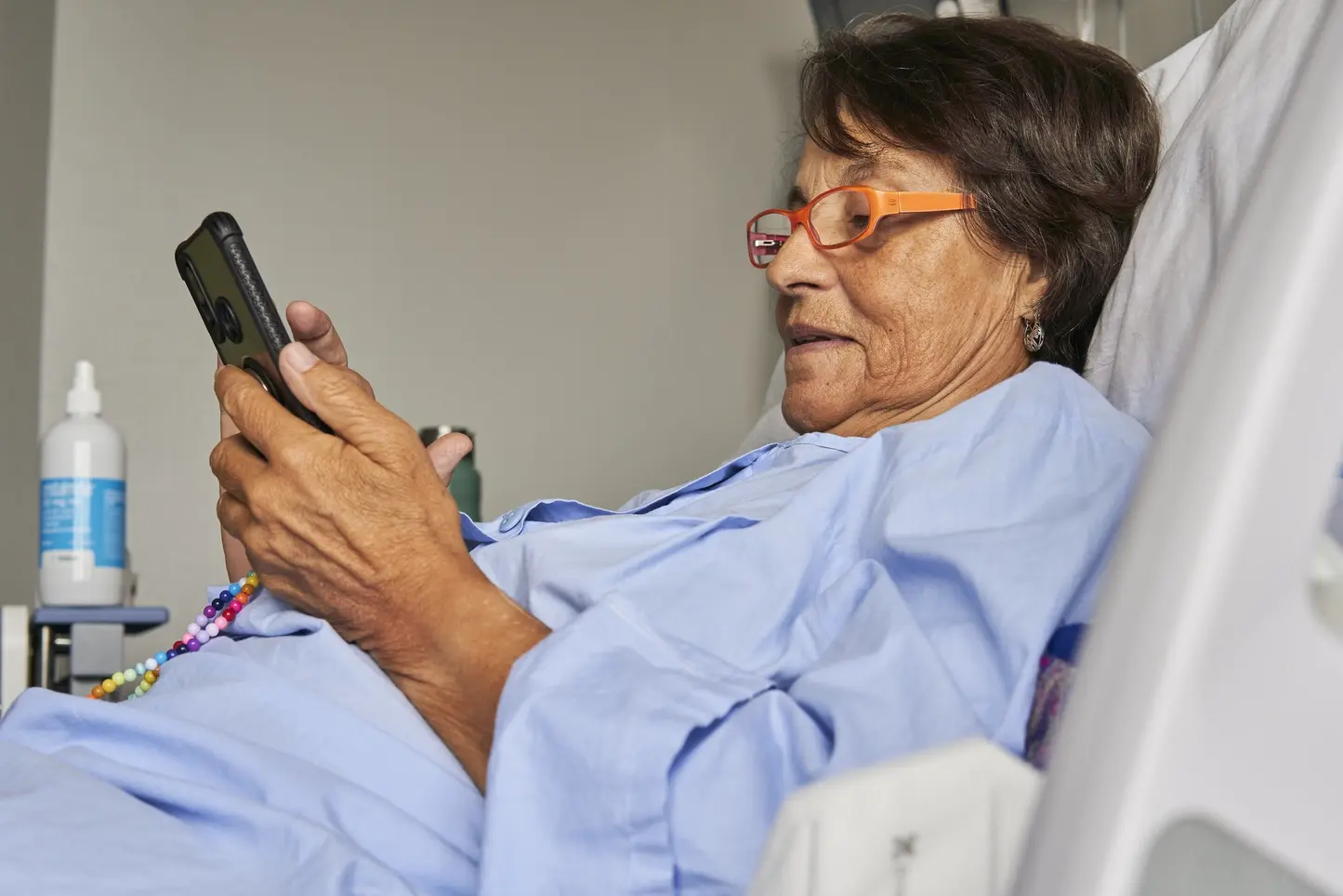
By using FHIR, Kaiser enhances the efficiency and accuracy of data exchange, enabling seamless integration with other healthcare systems and applications. This not only improves patient care by providing timely access to critical health information but also supports the broader goal of interoperability in healthcare, making it easier for patients to manage their health and for providers to deliver coordinated care.
FHIR has effectively set the stage for a new chapter in patient-provider interactions through patient portals, dismantling barriers to information access and placing the power of knowledge firmly in the hands of the patient. By fostering the development of user-friendly patient portals, FHIR has improved patient engagement and catalyzed a cultural shift towards a more informed and proactive approach to personal healthcare.
Case Study #3
Facilitating Clinical Decision Support
The FHIR standard opens up possibilities for apps to utilize data across the healthcare environment, enabling better support for clinical decisions. By structuring and organizing patient data, FHIR allows healthcare providers to have access to real-time information, thus enhancing their capacity to make informed decisions.

The integration of clinical decision support within EHR workflows is streamlined through the use of CDS Hooks, which leverage FHIR to deliver recommendations and clinical suggestions right where they’re needed most – within the EHR environment itself.
Real-World Example: CDS Hooks in Action
Scenario: A primary care physician uses an EHR system integrated with CDS Hooks during a patient visit.
Example:
-
Prescription Entry: The physician enters a new medication into the EHR.
-
Triggering the Hook: This activates the "medication-prescribe" hook in the EHR's CDS Hooks system.
-
Data Exchange: Patient data, like current medications and allergies, is sent to the CDS Hooks service.
-
Decision Support: The service checks for potential drug interactions based on clinical guidelines.
-
Alert and Guidance: If a concern arises, the CDS Hooks service alerts the physician in real-time within the EHR, suggesting adjustments.
-
Action: The physician reviews the alert, adjusts the prescription as needed, and discusses options with the patient.
Benefits: CDS Hooks streamline decision-making by providing timely alerts and guidance directly within the EHR, enhancing patient safety and treatment effectiveness. This example demonstrates how CDS Hooks integrate seamlessly into clinical workflows to make care management outcomes support better healthcare outcomes.
FHIR’s role extends into the public health sphere, where it supports the incorporation of social factors of health data, laying the groundwork for more nuanced and data-driven decision-making processes.
A public health department uses FHIR to integrate data from EHRs and social services, creating comprehensive profiles that include social determinants of health like housing and food access. This helps identify high-risk populations and develop targeted interventions, such as working with food banks to address food insecurity, enabling more effective, data-driven decision-making for community health.
While the potential of FHIR in advancing predictive analytics and clinical decision-making is immense, the journey toward fully realizing this potential hinges on the continual validation of clinical effectiveness and interoperability capabilities in the field of observational health data sciences.
Summary
As the healthcare landscape evolves, FHIR adoption promises seamless data exchange, heightened patient engagement, and optimized healthcare delivery. We, as healthcare professionals and developers, leverage FHIR to create a more connected, efficient, and patient-centric health care ecosystem. By integrating FHIR into our custom healthcare software development, we enhance patient care and streamline clinical workflows.
Frequently Asked Questions
2
How does FHIR impact patient portals and patient engagement?
+
FHIR advancements in patient portals promote greater patient engagement and personalize patient care by enabling easy access to health data, medical records, appointment management, and communication with healthcare providers, empowering patients to take an active role in their healthcare.
3
Can FHIR be used for remote patient monitoring?
+
Yes, FHIR can be used for remote patient monitoring as it enables the exchange of data from personal health devices to healthcare providers, supporting telemedicine and patient monitoring capabilities.
4
What role does FHIR play in medical billing and revenue cycle management?
+
FHIR streamlines healthcare and data management and exchange to improve the efficiency of medical billing processes by standardizing data exchange in claims management and organizing insurance plans. This ultimately leads to improved financial health for healthcare organizations.
5
How does FHIR work with machine learning to advance healthcare?
+
FHIR's standardized data model streamlines clinical data analytics, enabling efficient data sharing and integration with machine learning algorithms. This accelerates predictive analytics and empowers personalized medicine, ultimately improving patient outcomes and advancing medical research.
6
Do all records need to have certain data columns and do these columns need to have certain naming?
+
Yes, FHIR records must include specific mandatory fields to ensure interoperability. Each FHIR resource type, such as Patient or Observation, has required and optional data elements that must be present for consistency. For instance, a Patient resource requires fields like id, name, gender, and birthdate.
The data columns in FHIR resources must adhere to standardized naming conventions to ensure proper data processing across systems. For example, a Patient’s name must be labeled as name, and their birth date as birthDate.
Example data tables for FHIR resources are provided in the official documentation, demonstrating the required structure and elements. These tables assist developers in formatting data correctly to achieve effective data exchange and interoperability.

Written by
Chief Revenue Officer/Founder, Seamgen
I founded Seamgen, an award winning, San Diego web and mobile app design and development agency.

Do you need a premier custom software development partner?
Let’s discuss your modernization strategy and digital application goals.
Let's Connect
Up Next






